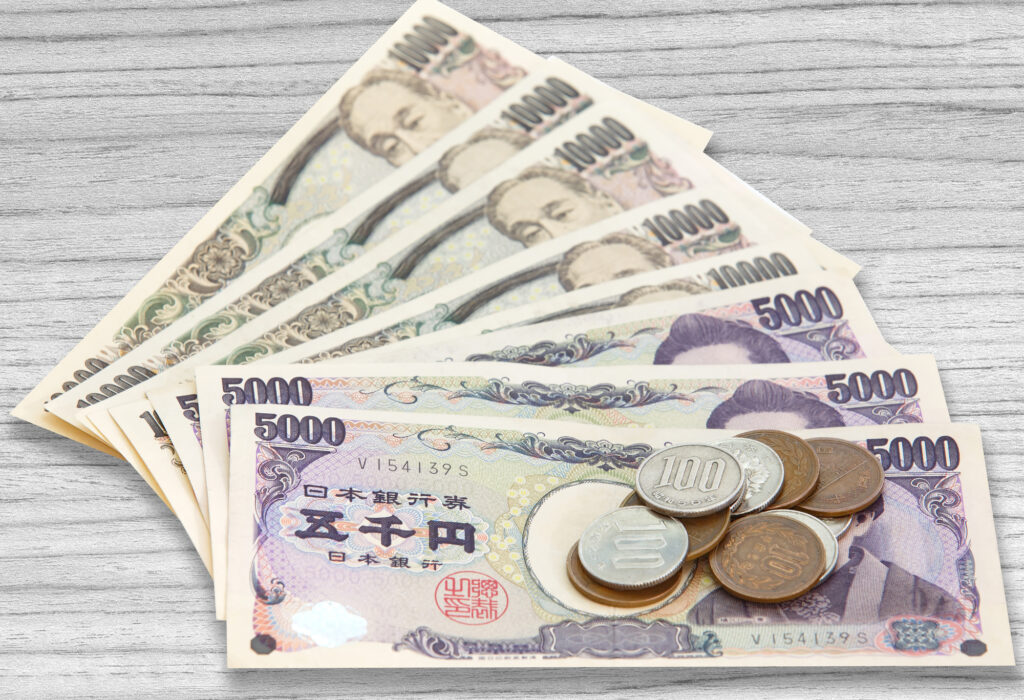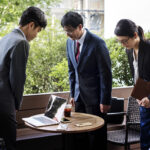Planning a visit to Japan? Before you go, it’s important to understand how to pay for things, so you can look forward to a smooth, fulfilling trip—and so that you don’t offend any locals in the process. Japan’s highly-structured, organized society includes a booming economy. It’s important to know how the Japanese conduct business, so you can be mindful of their common cultural practices.
Japan’s economy is based on the yen. It’s the third most traded form of currency on the forex market, following the U.S. dollar and the Euro. Here’s what you need to know about Japanese currency.

A brief history of the Japanese Yen
Introduced through the New Currency Act of 1871, the Japanese yen was defined as 1.5 g (~.048 troy ounces) of gold. The yen replaced Japan’s previous Tokugawa coinage and hansatsu paper currencies issued in the feudal times. Founded in 1882, the Bank of Japan now controls the money supply in the country, and the currency has seen its ups and downs over the years.
After World War II, the yen lost much of its value. An exchange rate of 360 yen per one U.S. dollar was set to stabilize the yen. The system was abandoned in 1971, allowing the yen to float. The world price of yen has steadily decreased since 1995. There are signs the yen could weaken even further than current figures, up to 170 against one U.S. dollar in the new year.
Japanese currency denominations
The Japanese yen can be further broken down into sen. One hundred sen is equivalent to one yen, but sen is rarely used in everyday life in Japan anymore. Currently, the Bank of Japan issues the following bills and coins:
- Bills: 1,000-, 2,000-, 5,000- and 10,000-yen notes.
- Coins: 1-, 5-, 10-, 50- and 100-yen coins and a 500-yen bicolor clad coin.
USD to JPY exchange rate (2022)
As of writing, one U.S. dollar equals nearly 147 Japanese yen. Currently, the dollar is riding a high against the yen. In October 2022, one U.S. dollar was equivalent to over 150 yen—the highest figure in more than 5 years.
Can you use other currencies in Japan?
In general, foreign currency is not accepted as payment in Japan, except in some rare cases at international airports.
While Japan has traditionally been viewed as a cash-based society, the country’s also well-known for its focus on technological innovation and convenience. There’s an increasing acceptance of payments other than cash in Japan, and you’ll find many vending machines and store kiosks accepting contactless, electronic payments.
No matter what you need to buy during your stay in Japan, here are some of the most convenient currency options, other than cash:
- IC cards. IC cards are convenient for tourists and locals alike. Suica and Icoca are the two most popular brands, and they offer stored-value cards that can be recharged. In the past, most Japanese people used IC cards to pay for public transit. Now, they double as a payment method for an increasing number of shops and restaurants, at convenience stores, vending machines, coin lockers and more.
- Mobile apps. There are several mobile payment apps available to make paying for things easier in Japan, and around the world. Most apps let users tap an NFC reader or scan a QR code to pay, for contactless, convenient payments. Some of the most popular domestic services include Edy, Line Pay, Paypay and Rakuten Pay. International services like Apple Pay and Alipay are becoming more popular in Japan, but you often need a registered Suica card along with it.
Credit cards are often an option
More and more, credit cards are becoming widely accepted in Japan, especially in the country’s big cities. You can often pay for hotels with a credit card, and most major department stores, mid- to high-end restaurants and malls accept them, too. While not all train stations, convenience stores and supermarkets accept credit cards, most do (see more about convenience stores here). Bring your international credit card with you on your stay in Japan for quick payments made easy.
Where to get your yen
As mentioned, Japan is still generally considered a cash-based society, so it’s smart to have plenty of cash on hand at any time during your stay in the country.
Cash is accepted in just about any situation you can think of. Also, since Japan is so well-known for its low crime rates, you won’t have to worry about keeping large amounts of cash with you wherever you go—security is much less of a concern than losing your cash by accident.
The easiest ways to grab yen quickly and affordably in Japan include:
Currency exchange
You’ll find currency exchange locations as soon as you hit the ground in Japan, as all major international airports have at least one currency exchange office. Keep in mind, though, that you’ll pay higher fees to exchange money at the airport instead of other locations. You’ll also find currency exchange services at banks, post offices and some larger hotels.
Some travelers find it’s more favorable to exchange their currency for yen before traveling to Japan, but it’s not always the case. For U.S. dollars, in particular, you might get a more favorable exchange rate in Japan, since the dollar is a highly traded foreign currency.
ATMs
While some travelers rely on ATMs to get their cash, keep in mind that most machines don’t accept foreign credit cards. For ones that do, exchange rates are often competitive, but the fees may be high. Also, remember that many Japanese ATMs are out of service on night and, sometimes, on weekends.
All about the cash tray
It’s well-known that the Japanese people are big on etiquette, and their social norms and rules extend to the exchange of money. That’s where the cash try comes in. Whenever you visit any type of shop, from convenience stores to souvenir shops, you’ll see a small cash tray at the payment counter. You put your cash in the cash tray to pay, since money is rarely passed from hand to hand.
Using the cash tray makes things easier on the cashier. It also prevents awkward interactions should the money fall to the floor. The cash tray is also used for hygiene since some people are uncomfortable touching another person’s hands or money. If you’re owed change for your purchase, bills and coins will be placed into the tray, so you can quickly and easily collect it.
Other transaction etiquette tips
Whether you’re dining in a high-end restaurant or you’re staying at a hotel, there are other forms of etiquette you should be aware of when it comes to paying for products and services. Here are some helpful tips that will make your stay much easier:
- Asking for the bill. If you’re in a restaurant and you’re ready to settle up and pay your bill, make an “X” sign with your fingers. Most westerners would see this as a negative gesture, but in fact it doesn’t mean “No,” or “Wrong,” rather it’s a common gesture that shows the waitstaff you’ve finished eating and want to pay and leave. You’ll get the bill quickly, without fail.
- Tipping. In Japan, tipping isn’t a common practice. While you can tip in certain situations—like when you’re staying at a ryokan—most waitstaff, bartenders, taxi drivers, hotel staff and other servicepeople don’t accept tips. They’re paid a fair wage for their services, and they’re happy to go above and beyond their job duties to assist you, with no tip required.
- Form a line. It’s common practice in Japan to form a line and patiently wait for your turn to check out at a supermarket, convenience store, souvenir shop, or nearly any other shop or boutique. Often, you’ll notice tape on the floor or a roped off section to guide guests to the checkout in an orderly manner. Follow this simple rule and wait your turn to be respectful of the norms of Japanese culture.
- Don’t recount your change. If you’re receiving change from a cashier, they’ll typically count it out in front of you to make it clear you’re getting the proper amount back. Pay close attention to the cashier as they count, accept the change and be sure not to count it yourself. This is seen as offensive, as if you don’t trust the cashier’s skills.
- Ask if credit cards are accepted. Whenever you walk into a store or restaurant and plan to make a purchase, look around for credit card logos at the entrance. If you don’t see any card logos, ask the staff, “Kurejittokādo wa tsukaemasu ka?” which means “Do you accept credit cards?”
Get ready to shop ‘til you drop in Japan!
No matter where your travels take you in Japan, you’re going to need to pay for things. From food and drinks to transportation, hotels, souvenir stores and more, you can look forward to many transactions as you enjoy your stay in the country. Make sure you have plenty of cash on hand at all times, so you can easily buy the things you need, and keep the etiquette tips above in mind to be respectful of the locals and look forward to a fantastic trip!
- How Much Money Can You Make Teaching English in Japan? - December 12, 2022
- The Best Places to Teach English in Japan - December 9, 2022
- The Best Credentials for Teaching English in Japan - December 8, 2022








